| |
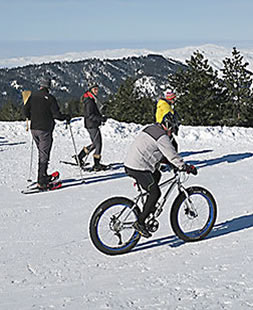
|
|
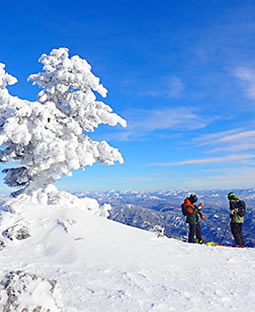
|
|
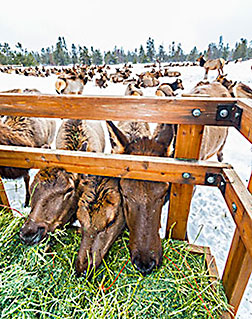
|
|
| |
Bogus Basin, Idaho, Minutes from Boise
by Lee Juillerat |
|
Bogus Basin – The Friendliest Ski Resort on the Planet
by Lynn Rosen
|
|
Winter Idaho: Feeding Elk and Snowmobiling
by Yvette Cardozo
|
|
| |
Just as Bogus offers more than downhill skiing and snowboarding, the Nordic Center offers more than cross country skiing. Especially popular on weekends and holidays is a rental yurt available for overnight stays. Reservations are necessary. The groomed tracks include sections for large numbers of snowshoers, including school groups. Gaining in popularity are fat-tired mountain bikes. Lessons, equipment and information are available through the Nordic Center.
|
|
Bogus Basin Mountain Recreation Area just up the hill from Boise, Idaho, is the largest and most successful non-profit ski area in the country. How in the world does this work without a profit motive? With a lot of love, caring and a tremendous army of local volunteers who care about the treasure they have in their own backyard. Lynn Rosen tells the remarkable story of how this ski resort first evolved and now thrives. Photos by Larry Turner and an historical video provided by Bogus Mountain.
|
|
The elk have worked out a system. These elk actually take turns, some coming to nibble the hay from right under your rump, others sitting a few yards away until the next sleigh comes along. It’s the cows (females) and young males with tiny antlers that nudge in. There ARE bulls, some with seven point antlers (yes, that’s a LARGE rack). But the bulls just sit there, keeping watch. There’s a temptation to reach out and pet their furry heads, maybe stroke the small antlers of “teenage” males. But don’t.
|
|
| |
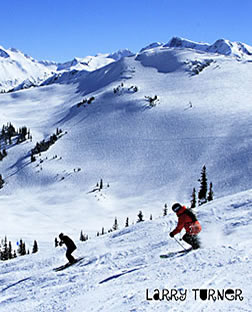
|
|
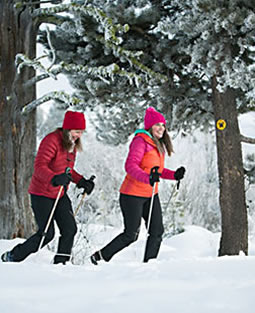
|
|
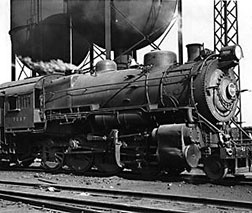
|
|
| |
Whistler-Blackcomb:
Heavenly Spring Skiing
by Larry Turner
|
|
Tamarack Winter
by Vicki Hoefling Andersen
|
|
Curly's Caboose
by Ted Blishak
|
|
| |
If you’re booking a winter ski or board vacation to WB, it’s best to choose the long end as opposed to the short end as far as ski/board days. John and I spend at least a week. This gives you an opportunity to get a deep taste of both mountains along with having a day or two off to explore the lovely Whistler Village and surrounding area. Generally, we stay put, and the car never moves from the basement of the World Mart Cascade Lodge. Whistler's bus system is excellent, so use it if you needhoa15sep to go a longer distance.
|
|
Investors flocked to purchase vacation abodes, many with views of Lake Cascade, a 47-square mile reservoir on the North Fork of the Payette River in west central Idaho. But rather than enjoying winters playing on the slopes, and summers chasing golf balls, a few years ago they watched in dismay as one of their chairlifts was repossessed. Homeowners who have held their breath to see what happens next took action last fall and purchased the resort operations.
|
|
Ted Blishak travels back in time to when freight trains still carried that beloved icon, the caboose. No longer used on trains, people have purchased them to use as offices, hotel rooms, etc. He has two precious memories of being invited aboard cabooses, and shares the experience with those (most everyone) who have not seen them at work, but only heard about them. If you’d like to buy one, he explains how it can be done.
|
|
| |
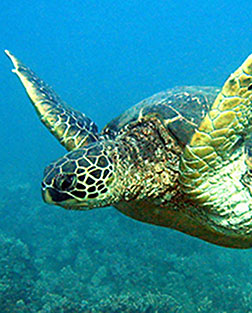
|
|
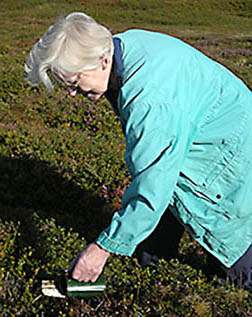
|
|
|
|
| Maui's Winter Spectacle Cavorting Humpback Whales and Green Sea Turtles, by Les Furnanz |
|
Subarctic Fruit: Picking Icelandic Globular Things;
an essay by
Sarah M. Brownsberger |
|
|
| Hundreds
of years ago, millions of sea turtles swam the Earth's oceans. Today,
all seven species of sea turtle are threatened, including Hawaii's
most common, the green sea turtle, or homu.� They pre-date many
dinosaurs and are mythological symbols of creation, longevity, and
wisdom.The green sea turtle, often seen by snorkelers or divers along
Maui's western shore, is a gentle vegetarian reptile that can weigh up
to 400 pounds and feeds on coral reef algae and seaweed. |
|
A classic Icelandic children’s book frankly explains, “We live in a cold place, where only grasses can grow. We can’t digest grass, so we eat animals that can, such as sheep and cows.”
But Iceland does have native trees, low and gnarled as they may be. Scrub willows huddle by mountain streams. The local birch, or ‘perfume bark’ in Icelandic, smells like sweet spice and has a fierce will to live. |
|
|
|
| |
|
|
| |
Who we are: For brief bios on the writers who form this Pacific Northwest collective, please click here. |
|
|
|
|